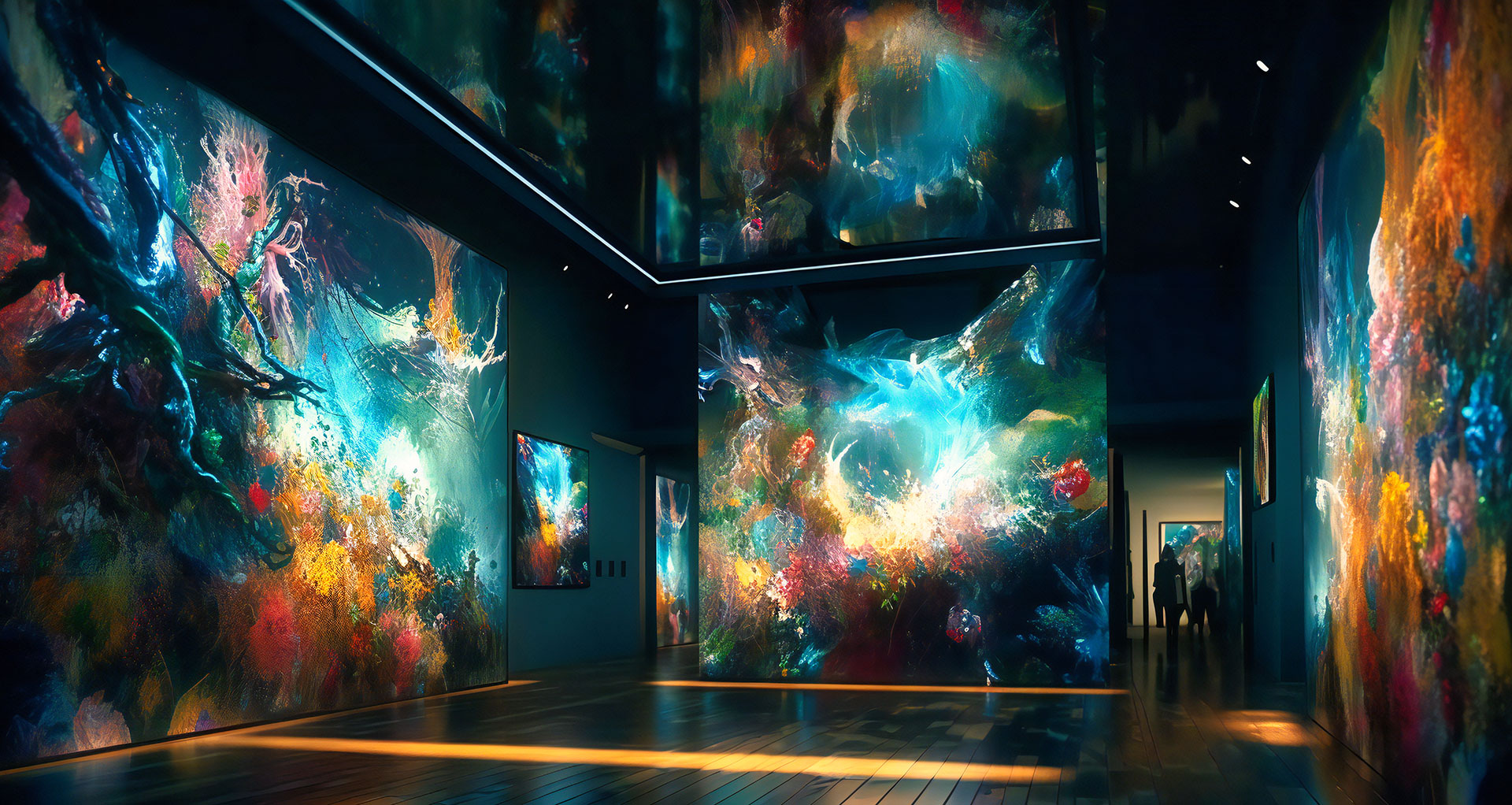Immersive technologies have become the future. They create an incredible presence in a simulated world or augment the real world with digital media. Presentations are increasingly made with immersive technology for entertainment, education, training, and marketing. The increase in usage comes as no surprise, as immersive media can take presentations to the next level by creating a riveting and engaging experience for the viewer – whether it’s simplifying complex topics or creating a beautiful view of a simple concept.
A recent article in Forbes does a great job looking at this topic. Let’s continue reading:
This (the increase in usage) is reflected by the global immersive technology market size, which was valued at USD 21.66 billion in 2021 and is expected to grow exponentially to hit an impressive USD 134.18 billion by 2030.
So what are immersive technologies, how do they work and how can you apply them to amplify the effectiveness of your presentations? As co-founder of a visual marketing agency, I’d like to share my top six immersive presentation technologies.
The article continues with the various kinds of immersive technologies:
Augmented Reality (AR)
Augmented reality overlays digital information or objects on top of the real world, enhancing the user’s perception of reality. AR can be used for presentations that need to add context, detail or novelty to the physical environment. It is usually remotely accessible with just a mobile device, making it a hugely popular immersive presentation medium.
AR typically requires a mobile device with a camera, while some specialized applications may require specific AR glasses.
You can use AR to show the audience how a product works, how a building would look, how furniture would look in their home or how wearable accessories would appear on them, among other applications.
360-Degree Video
360-degree video captures the entire scene from all angles, allowing the user to look around and choose their own perspective with the use of a headset or touchscreen. It creates a highly realistic and detailed experience by encompassing the entire environment.
This medium can be ideal for presentations that want to immerse the audience in a different location, culture or situation such as a travel destination, a real estate property or a personal story.
Interactive Presentation
In my experience, interactiveness is the key to engagement with your audience, and interactive presentations leverage this perfectly by including elements like hyperlinks and hotspots to create an engaging and personalizable interface. They also include audio, video, charts, surveys, navigation and transitions that are controllable by viewers.
Interactive videos require displays with touchscreens or other controllers like a mouse. They are usually also accessible on mobile devices, and this makes them convenient for remote presentations.
Interactive presentations can be used in various settings such as education, business marketing and healthcare to engage audiences, enhance learning and create personalized experiences.
Virtual Reality (VR)
Virtual Reality creates a fully immersive experience that blocks out the physical surroundings and transports the user to a different reality. It typically involves 3-dimensional and 360-degree viewing technology as well as AR, 3-D audio, interactive elements, digital modeling and other regulators that control temperature and smell, among others.
VR presentations usually require the use of 3-D glasses and a headset with tracking along with other devices depending on the complexity of the experience.
Consider using VR presentations for simulations, product demonstrations and virtual tours of physical sites or digitally-modeled fictional worlds.
Mixed Reality (MR)
Mixed Reality combines elements of VR and AR, creating a hybrid experience that allows the user to interact with both digital and physical objects in a shared space. It is perfect for presentations that involve collaboration, creativity or problem-solving.
An MR presentation could enable the audience to co-create a design, manipulate a 3-D model or solve a puzzle.
Holograms
Holograms are three-dimensional images that appear to float in mid-air, creating an illusion of depth and realism. Holograms can impress, inspire and surprise the audience by leveraging the power of realistic visuals. They can create a more memorable experience, as 65% of the population are visual learners.
One holographic projector device with speakers is enough to create a complete 3-D experience at your target location. Consider using a hologram presentation to feature a celebrity speaker, a live performance, a product or special effects.
Finally, the article sums it up by saying,
We have discussed some of the top cutting-edge immersive technologies that can enhance presentations and make them more memorable and impactful. But don’t hurry up!
Before diving into the world of immersive presentations, you must remember to consider your options carefully and give enough time to planning and design. You must also ensure that they align with the goals and needs of the presenter and the audience.
Now go ahead and unlock the immense potential of immersive presentations to engage and convince your audience.
So, now, let’s help you take the next step – give Industrial3D a call today.





